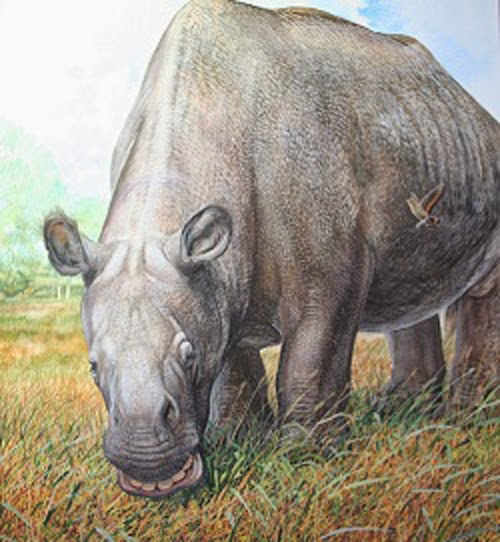
Scientists have resolved pieces of a nearly 200-year-old evolutionary puzzle surrounding the group of mammals that Charles Darwin called the “strangest animals ever discovered.” New research led by the Natural History Museum, the American Museum of Natural History and the University of York shows that South America’s native ungulates, or hooved mammals — the last of which disappeared only 10,000 years ago — are actually related to mammals like horses rather than elephants and other species with ancient evolutionary ties to Africa as some taxonomists have maintained. Published today in the journal Nature, the findings are based on fossil protein sequences, which allow researchers to peek back in time up to 10 times farther than they can with DNA.
Ian Barnes, Research Leader at the Natural History Museum and one of the paper’s authors, explained: “Although the bones of these animals had been studied for over 180 years, no clear picture of their origins had been reached. Our analyses began by investigating ancient DNA to try to resolve the problem.”
“Fitting South American ungulates to the mammalian family tree has always been a major challenge for palaeontologists, because anatomically they were these weird mosaics, exhibiting features found in a huge variety of quite unrelated species living all over the place,” said Ross MacPhee, one of the paper’s authors and a curator in the American Museum of Natural History’s Department of Mammalogy. “This is what puzzled Darwin and his collaborator Richard Owen so much in the early 19th century. With all of these conflicting signals, they couldn’t say whether these ungulates were related to giant rodents, or elephants, or camels — or what have you.”
However, the team soon realized that ancient DNA — that is, genetic material extracted from fossils — did not survive in these fossils, because the DNA molecule survives poorly in the warm, wet conditions like those typical of South America. The breakthrough came when the researchers switched to analysing collagen, a structural protein found in all animal bones that can survive for a million years or more in a wide range of conditions. The chemical structure of the amino acids that make up a protein is ultimately dictated by specific coding sequences in the organism’s DNA. Because of this key relationship, amino acid compositions of the same protein in different species can be analysed and compared, providing insight into how closely the species are related.
“People have been successful in retrieving collagen sequences from specimens dating up to 4 million years old, and this is just the start,” said University of York Professor Matthew Collins, whose lab did the sequencing work. “On theoretical grounds, with material recovered from permafrost conditions, we might be able to reach back 10 million years.”
The scientists used proteomic analysis to screen 48 fossils of Toxodon platensis and Macrauchenia patachonica, the very species whose remains Darwin discovered 180 years ago in Uruguay and Argentina. “By selecting only the very best preserved bone specimens and with various improvements in proteomic analysis, we were able to obtain roughly 90 percent of the collagen sequence for both species,” said lead author Frido Welker, a Ph.D. student at the Max Planck Institute for Evolutionary Anthropology and the University of York. “This opens the way for various other applications in paleontology and paleoanthropology, which we are currently exploring.”
With modern techniques, the researchers were able to conclusively show that the closest living relatives of these species were the perissodactyls, the group that includes horses, rhinos, and tapirs. This makes them part of Laurasiatheria, one of the major groups of placental mammals. The molecular evidence corroborates a view held by some leading paleontologists that the ancestors of these South American ungulates came from North America more than 60 million years ago, probably just after the mass extinction that killed off non-avian dinosaurs and many other vertebrates.
Reference:
Frido Welker, Matthew J. Collins, Jessica A. Thomas, Marc Wadsley, Selina Brace, Enrico Cappellini, Samuel T. Turvey, Marcelo Reguero, Javier N. Gelfo, Alejandro Kramarz, Joachim Burger, Jane Thomas-Oates, David A. Ashford, Peter D. Ashton, Keri Rowsell, Duncan M. Porter, Benedikt Kessler, Roman Fischer, Carsten Baessmann, Stephanie Kaspar, Jesper V. Olsen, Patrick Kiley, James A. Elliott, Christian D. Kelstrup, Victoria Mullin et al. Ancient proteins resolve the evolutionary history of Darwin’s South American ungulates. Nature, 2015 DOI: 10.1038/nature14249
Note: The above story is based on materials provided by University of York.










